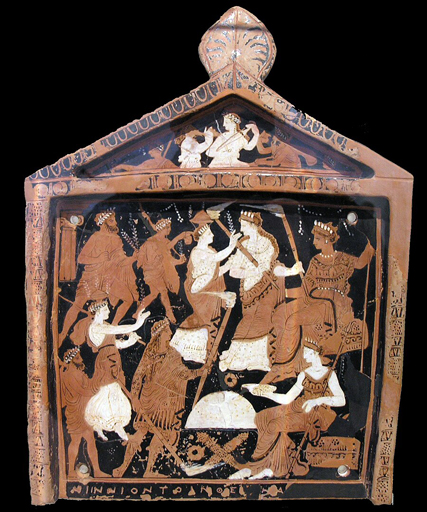2 Worshipping Amphiaraos: personal religion and ‘polis’ religion
But what did it mean to worship Amphiaraos and how exactly did the ancient Greeks encounter him? In this section, you will explore these questions from two main perspectives which have been applied to modern studies of ancient religions. The first one is known as ‘personal’ religion: as the title suggests, this perspective is concerned with thinking about the needs of the individual person in their religious experiences with the divine. As one scholar summarises, personal religion seeks to understand ‘how individuals in the ancient Greek city adapted… culturally-given religious beliefs and practices to fit their personal religious needs’ (Kindt, 2015, p. 45). The cult of the Eleusinian Mysteries celebrated at the town of Eleusis (see Map 1) in honour of the goddesses Demeter and Persephone is a good example of personal religion, given that the choice to partake in its rituals and practices was very much based on individual initiative and personal aspirations.
The second perspective is known as the ‘polis-religion’ model – ‘polis’ being the ancient Greek word for city-state or community. This model views ancient Greek religion as intricately connected to the values of the city-state and supporting the city’s ideals (e.g. Sourvinou-Inwood, 2000). Although this view is arguably less fashionable than it once was, there are still certain contexts in which this model may be usefully applied to understand ancient religion. The biggest festival in the Athenians’ religious calendar, for example, known as the Panathenaia, was an opportunity for the Athenians to celebrate Athena, who as patron goddess of the city played a crucial role in its citizens’ self-identity.
An important point to bear in mind, however, as one scholar of ancient Greek religion points out, is that the terms ‘personal’ and ‘polis’ religion are modern ways of looking at the ancient Greek religious system (Kindt, 2015, p. 37). This means that the ancient Greeks did not consciously distinguish between these two terms as we do today in their everyday religious activity. As such, we can usefully look for elements of both ‘polis’ and ‘personal’ beliefs and practices within the same cult. This is the approach which will be adopted in this course, using the example of the cult of Amphiaraos as your case-study. In the following sections, you will examine material remains from Amphiaraos’ sanctuary to discover how the ancient Greeks worshipped him both as individuals and as part of broader communities.

